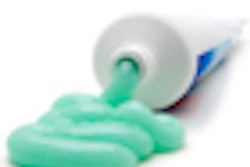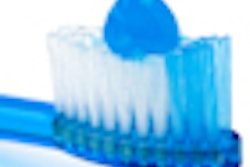Triclosan, a common antibacterial agent used in toothpaste, soap, and many other consumer products, is being found in increasing amounts in Minnesota freshwater lakes, according to a new study in Environmental Science and Technology (January 15, 2013).
The findings are directly linked to increased triclosan use over the past few decades, according to the study authors, from the University of Minnesota.
The researchers also found an increasing amount of chlorinated triclosan derivatives that form when triclosan is exposed to chlorine during the wastewater disinfection process. When exposed to sunlight, triclosan and its chlorinated derivatives form dioxins that have potential toxic effects in the environment. These dioxins were also found in the lakes.
The study's results raise new questions about the use of triclosan. Triclosan was patented in 1964 and introduced into the market in the early 1970s. Since then it has been added to many consumer products, including soaps and body washes, toothpastes, cosmetics, clothing, dishwashing liquid, and kitchenware. Beyond its use in toothpaste to prevent gingivitis, the U.S. Food and Drug Administration (FDA) has found no evidence that triclosan in antibacterial soaps and body washes provide any benefit over washing with regular soap and water. The FDA and the Environmental Protection Agency continue to study the effects of triclosan on animal and environmental health.
The researchers studied the sediment of eight lakes of various sizes throughout Minnesota with varying amounts of treated wastewater input. They found that sediment collected from large lakes with many wastewater sources had increased concentrations of triclosan, chlorinated triclosan derivatives, and triclosan-derived dioxins since the patent of triclosan in 1964.
In small-scale lakes with a single wastewater source, the trends were directly attributed to increased triclosan use, local improvements in treatment, and changes in wastewater disinfection since the 1960s. When ultraviolet disinfection technology replaced chlorine in one of the wastewater treatment plants, the presence of chlorinated triclosan derivatives in the sediments decreased.
In the lake with no wastewater input, no triclosan or chlorinated triclosan derivatives were detected. Overall, concentrations of triclosan, chlorinated triclosan derivatives, and their dioxins were higher in small lakes, reflecting a greater degree of wastewater impact.
"The results were similar to other recent studies worldwide, but this was the first broad study that looked at several different lakes with various wastewater treatment inputs," said lead author William Arnold, a civil engineering professor in the University of Minnesota College of Science and Engineering, in a press release. "While wastewater treatment removes the vast majority of triclosan, these systems were not designed with this in mind. We need to continue to explore all aspects of this issue."



















